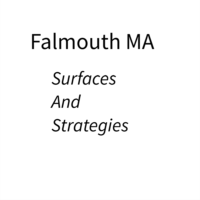Sandford Mill is a Water Treatment Plant on the edge of Chelmsford that was opened in the 1950s to provide water to the expanding market town. The facility was decommissioned in the 1980s the site is now owned by Chelmsford Museum as their out of city Science and Education unit. The Filter House is the largest building which has not been been given a new role on the site.
Intent
For my second visit to Sandford Mill I decided to focus my enquiry on the exterior of the building rather than the interior explored during the 1st visit. This would give me time to look at overall structure and its role to contain the chemical processes involved in creating safe drinking water.
Equipment Used
I decided to use two different apparatus from very different time periods for the exploration of the buildings exterior. The first a medium format film camera as the camera was introduced in 1985 around the time that the site was decommissioned as an operational water treatment plant. The second was a drone a tool that has found a space in the tool kit of engineers who survey buildings.
Methodology
The approach for this visit was two-fold. The first was to take exterior images of the building that record the exterior planes of the building for the 4 different aspects. Plus a series of closeup images where appropriate.
The second was to use the drone to take large mega pixel images of the images of the different faces a of the building. This would require the drone close the building and them capture a series of images that would then be stitched together in post.
Strong Image
This aerial image was one of the stronger images s it showed the relationship of the water treatment plant and the water source that is no longer feeding the plant since it was decommissioned.
Weak Image

For me this image was less successful because the strength of the sun while trying to capture the side facade of the building resulting in the lens flare in the sensor plus the trees close to the building meant the building was in shadow and this cause the sky above the top of the building to blow out.
Research References
No new research material was gathered for this visit to Sandford Mill.
Assessment of outcome
The recording the building using medium format for the images that record the overall face of the building was relatively easy to achieve however on two the faces mature trees made capturing clean images a challenge. The existence of those trees also start to define the age of the building in relation to the environment that surrounds the building. The overgrown trees and broken windows hint at the current status of the building as being no longer operational.
The drone images presented some different challenges. Trees in close proximity became a factor in determining the distance of the plane of capture to record the surface and therefore the number of images that would need to be combined together to create the megapixel pano image. Then it was a case of walking the drone on the capture plane making a number of passes to record the complete structure. Burtynsky has used a similar approach when creating his large gigapixel landscape images.
Overall I was please with the exterior images and the techniques examined during the second visit to Sandford Mill however I feel the more compelling story is inside the structure rather than the buildings exterior.
References
- Burtynsky



